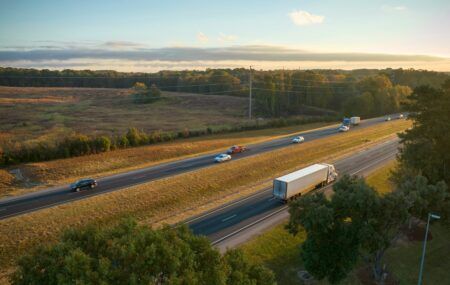In what could be a major breakthrough in how transportation infrastructure is built, researchers at Washington State University (WSU) have created a sustainable alternative to traditional concrete using coal fly ash, a waste product of coal-based electricity generation.
The advance made by the WSU team tackles two major environmental problems at once, by making use of coal production waste, and by significantly reducing the environmental impact of concrete production.
Xianming Shi, associate professor in WSU’s Department of Civil and Environmental Engineering (bottom right), and graduate student Gang Xu (below) have developed a strong, durable concrete that uses fly ash as a binder and eliminates the use of environmentally intensive cement.
The research was funded by the US Department of Transportation’s (USDOT) University Transportation Centers program and the WSU Office of Commercialization. The WSU team has published a report on its work in the August issue of the scientific journal Fuel.
Production of traditional concrete, which is made by combining cement with sand and gravel, contributes between 5-8% of greenhouse gas (GHG) emissions worldwide. This is because cement, the key ingredient in concrete, requires high temperatures and a tremendous amount of energy to produce.
Fly ash, the material that remains after coal dust is burned, meanwhile, has become a significant waste management issue in the USA. More than 50% of fly ash ends up in landfills, where it can easily leach into the nearby environment. While some researchers have used fly ash in concrete, they have not been able to eliminate the intense heating methods that are traditionally needed to make a strong material. The WSU team’s work is also significant because the researchers are using nano-sized materials to engineer concrete at the molecular level.
The team used graphene oxide, a recently discovered nanomaterial, to manipulate the reaction of fly ash with water and turn the activated fly ash into a strong cement-like material. The graphene oxide rearranges atoms and molecules in a solution of fly ash and chemical activators like sodium silicate and calcium oxide. The process creates a calcium-aluminate-silicate-hydrate molecule chain with strongly bonded atoms that form an inorganic polymer network more durable than (hydrated) cement.
The team designed the fly ash concrete to be pervious, which means water can pass through it, to replenish groundwater and to mitigate flooding potential.
Researchers have demonstrated the strength and behavior of the material in test plots on the WSU campus under a variety of load and temperature conditions. They are still conducting infiltration tests and gathering data using sensors buried under the concrete.
The team eventually hopes to commercialize the patented technology, which could revolutionize the way that highways and other infrastructure are constructed worldwide.
“Our production method does not require heating or the use of any cement,” explained Xu. “After further testing, we would like to build some structures with this concrete to serve as a proof-of-concept.”
Shi added, “To sustainably advance the construction industry, we need to utilize the ‘bottom-up’ capability of nanomaterials.”




